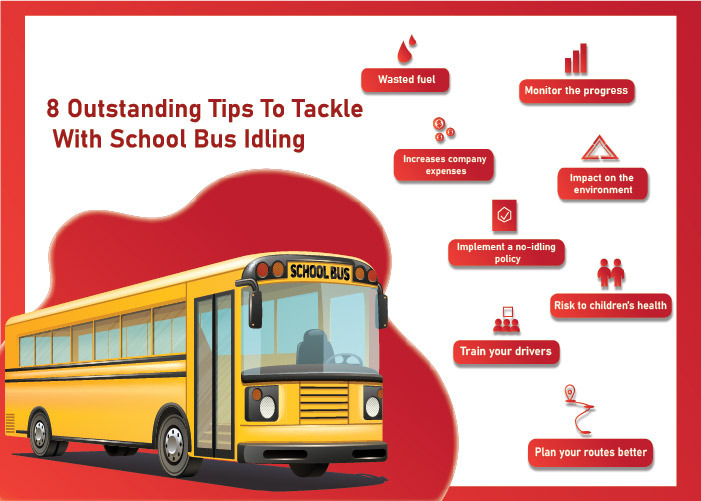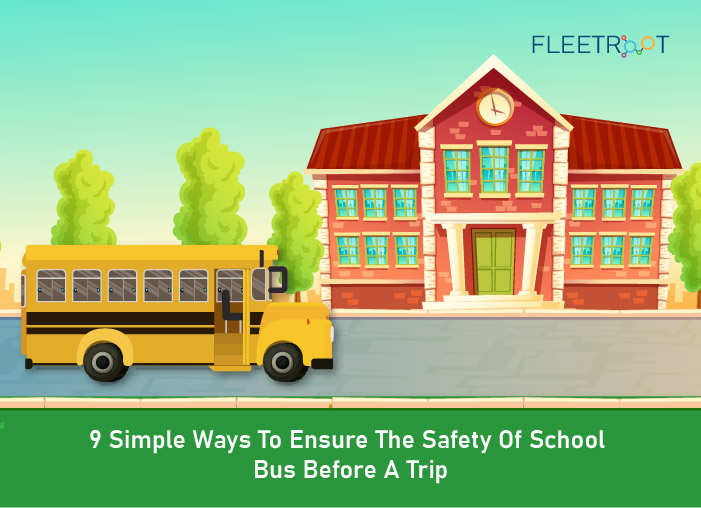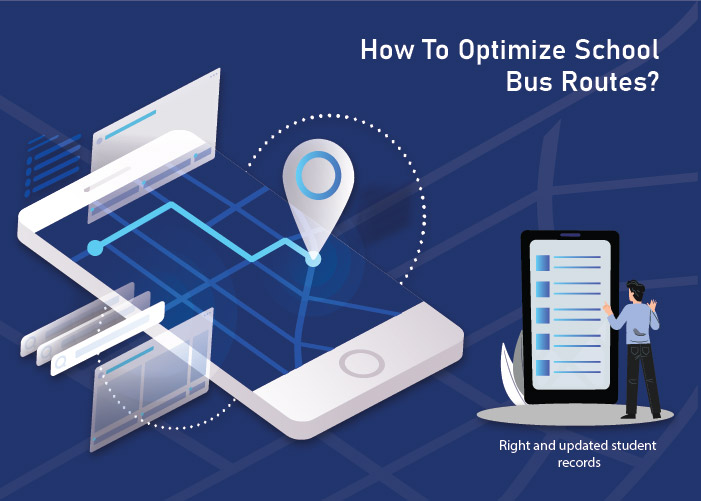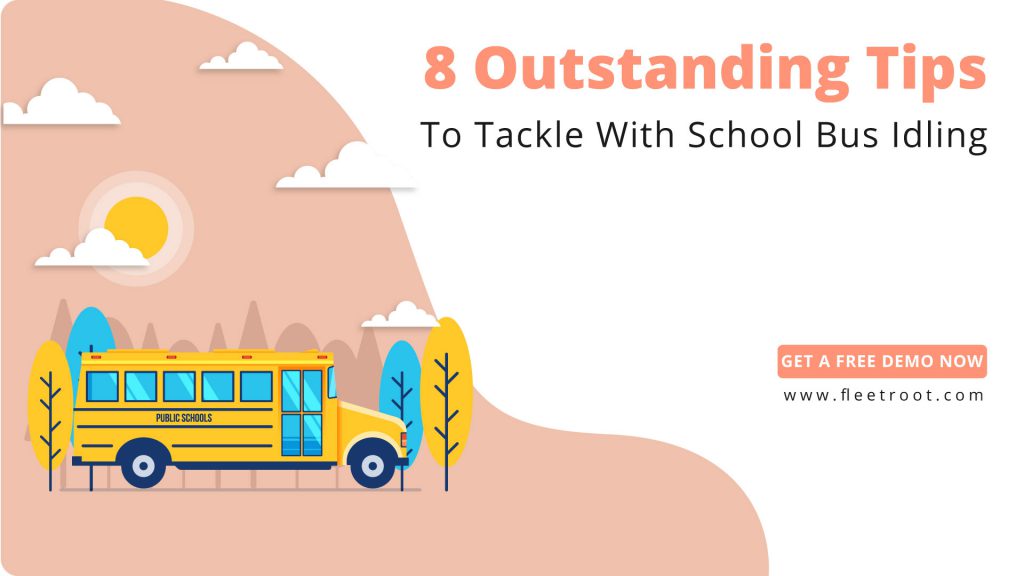
When we talk about school bus management, a lot of focus is laid on planning the routes, training the drivers and making sure that the fleet is used to its maximum.
However, we fail to look at problems emerging in the tiniest of places. We fail to look at the fuel that is being wasted while waiting at traffic stops or how this can have a massive impact on the environment as well as the well-being of those on-board.
We fail to address the issue of school bus idling because not many consider it as a problem. In fact, a lot of us have very limited knowledge of it.
What is school bus idling?
School bus idle time is the time that the engine is kept running when the vehicle is not in motion. Idling wastes fuel and can be a waste of financial resources while producing exhaust emissions that are harmful to health and the environment. Idle reduction aims to reduce this amount of energy wasted.
While it is true that you cannot turn off the engine every time that the bus stops for a passenger to board or de-board, small steps can have a significant impact.
Here’s why school bus idling is a problem that you must lay your focus on
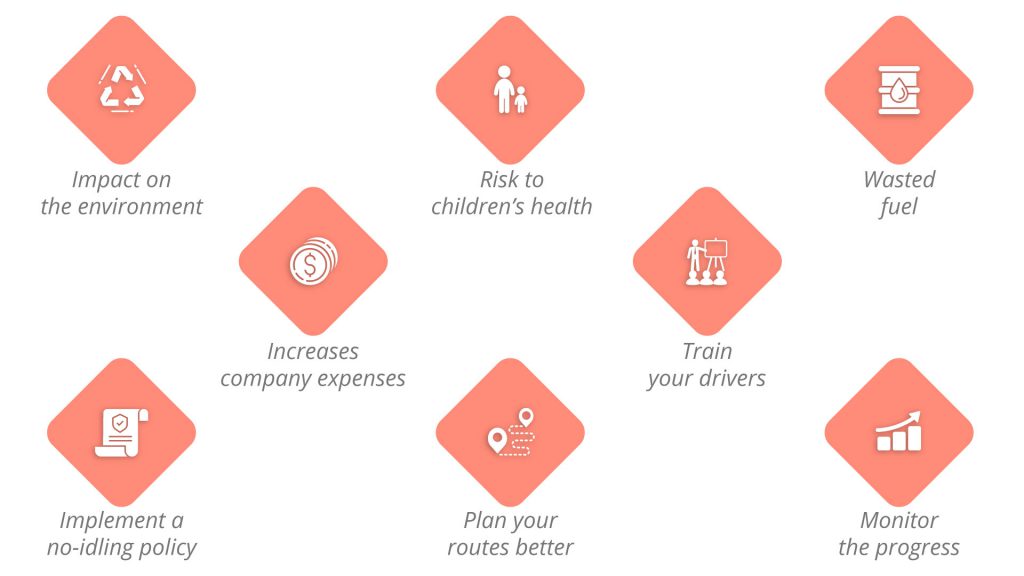
1.Impact on the environment
Air pollution is no stranger to the subject of school bus idling. Literally every second that the engine is on, it is adding to the pollution.
A quick Internet search will lead you to numerous scholarly studies and research papers about the correlation between pollution and idling as well as about the harmful health effects of diesel exhaust.
While it is understandable to run the engine when the vehicle is in motion, every other non-productive second, the bus is pumping more pollutants into the atmosphere.
Many assume that keeping the engine on at the low-speed is better as restarting causes more pollution. Instead, leaving the engine idle for more than two minutes leads to more emissions than a restart.
2.Risk to children’s health
The International Agency for Research on Cancer has termed diesel exhaust as “carcinogenic to humans.”
Diesel exhaust contains small particles, known as fine particulate matter, as well as smog-forming and toxic air pollutants, that can damage the lungs and heart. It can also cause respiratory problems, and sometimes lead to death.
Children breathe 50 percent more air per pound of body-weight than adults. As a result, they are more in the radar to get exposed to carcinogens and respiratory irritants contained in the diesel exhaust.
The immune system of children is fragile when compared to that of adults. Added to that the respiratory system is at the developmental stage for them. As a result, they are at a greater risk for any kind of health damage.
Prolonged exposure to this can lead to asthma, bronchitis, and pneumonia – thereby decreased lung function.
Given the considerable amount of time spend on the bus (apart from school and home), the kids are prone to fall ill easily due to long exposure.
3.Wasted fuel
Idling buses waste fuel and money. Whether electric or traditional vehicles, it is always energy efficient to turn off the engine at stops, rather than letting them run.
4.Increases company expenses
Wasted fuel implies an increase in fuel expenditure, which in turn results in greater costs for the company.
A lot of drivers believe that it’s better to let the engine at low speed than to turn it off. This is a myth. Running the engine unnecessarily causes twice the damage to the internal parts.
Idling does not protect the engine. Instead, it causes wear-and-tear that can have long-term implications on the vehicle.
However, there’s a way that you combat this problem. Here are a few steps that can help you reduce the idle time of your buses
5.Train your drivers
Increase awareness about the harms of bus idling. Train your drivers and tell them that leaving the engine on is not an option.
There are a lot of myths when it comes to idling. A lot of drivers are ill-informed and end up causing more damage rather than helping the vehicle. Hence, train them on what works and what doesn’t when it comes to the engine and fuels.
Buses should not be restarted until they are ready to move out from the parking bay. The morning warm-up idle time should be limited as per the manufacturers’ recommendations.
6.Implement a no-idling policy
Post ‘no idling’ signs and alert drivers and parents that the engine needs to be turned off in parking or during the wait time.
For buses that operate in cold-conditions (or on the transit buses), install a small on-board electric heater that can provide warmth to the engine as well as passengers seated inside. This can be a good alternative to idling.
These heaters run off diesel fuel or electric outlets and include a programmable timer to automatically start or stop the heating function.
If no-idling policy is impossible, have a specific limit on the minutes that the engine can be left to turned on. This should be explained in detail to the drivers.
7.Plan your routes better
More than often, school bus idling happens during wait-time. Drivers are left waiting when children don’t turn up on the designated time at the stop.
Using a good school bus GPS tracking system can help you resolve this issue. With an advanced solution, parents can track the ride and ensure that the students arrive on the stop accordingly.
Alternatively, you should also optimize your routes. Planning your journey makes it easier for you to avoid traffic snarls or long wait-time.
A school bus tracking software will automatically help you pick the routes that have the minimal stops. With less frequent traffic stops, you can be assured that your engine is running only when it is required.
The software will also help you pick students that are stationed along the same route. Hence, you don’t have to make unnecessary long trips and not fret around much gathering with all the children.
In schools, ensure that the parking zones are away from the schools or at least at a considerable distance from the air-intake vents so that in case the engine is left on, the students’ exposure to emissions is limited.
8.Monitor the progress
You must establish a baseline for your fuel consumption. Collect and review the data of the distance traveled versus the fuel consumed.
Compare the distance, number of stops and the fuel consumed along the each route. Analyze it and determine where there is unnecessary wastage.
Conclusion
Try putting your engine to rest when it is not required and you will see the dramatic results.
A school bus tracking system will be of additional help. It will keep a track on your fuel consumption and also tell you where the bus is spending extra fuel (just in case). It will also keep the drivers alert as they know that they are being monitored. Hence, you have nothing to worry about.
Wouldn’t you want to invest in a technology that not only helps you manage your fleet better but also ensures that the children traveling are not in the harm’s way?
